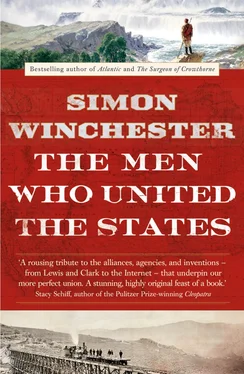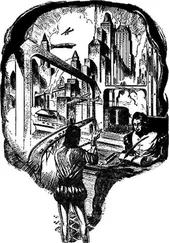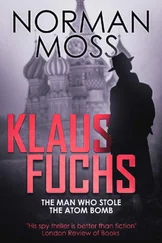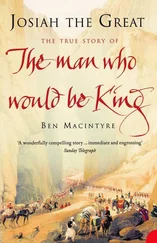One, at a place named Umatilla, is a secret and highly secure army base that was built specifically to destroy the nation’s stocks of nerve gas. The troops deployed here started work in the 1990s, and so numerous were the warheads filled with sarin and VX and mustard gas that they are still hard at it twenty years later.
The other monument, if such it deserves to be called, is an enormous silvery-looking factory—just as secret and secure in its own way as the Umatilla Army Depot—owned by the giant agribusiness corporation Con Agra. It is called Lamb Weston, and though it looks more like a steam-belching power station, it does make food, all of it out of potatoes. Its owners wouldn’t allow me access but instead referred me to a press release, which said in part:
Potato products are the most profitable food item on foodservice menus today. And no other product is so universally loved, so broadly versatile and available in so many styles, cuts and flavor profiles.
Local employees said that their plant makes french fries, one of the most popular of the humble potato’s “styles, cuts and flavor profiles,” for McDonald’s.

From here matters for the Lewis and Clark expedition changed fast, climatically and topographically. The dry plains gave way with startling suddenness to forest—rain forest, in fact, with low clouds and dripping moss. The river picked up speed as it squeezed through the Cascade ranges. There were rapids and small waterfalls—nowadays all smoothed and calmed by a succession of great dams, the Bonneville most notable among them. And then, once past the rapids, it seemed that in the ever-increasing risings and fallings that the team noticed each day, it might well now be affected by tides, from the sea. Sea frets—thick wet fogs smelling of fish and seaweed—began to trouble the scouts in the party, canoeists who were now having to pick their course carefully as they passed along on an ever-widening, shoal-rich estuary.
On November 6 it seemed that they might have attained their goal. “Ocian in view! O! the joy!” Clark’s line is often quoted. But he was wrong. Though they had done “4,212 miles from the Mouth of the Missouri R,” they were still in the Columbia estuary. It seemed so unfair: ocean waves were breaking into the bay, setting their craft rocking with an intensity as if they had been offshore. But it would be two more weeks of foul weather and disappointment before, at last, Lewis was able to disembark at a spot in full and undeniable view of the true Pacific and carve into a tree, just as Alexander Mackenzie had daubed onto that stone off Bella Coola twelve years before, a simple inscription: “By Land from the U. States in 1804 & 1805.”
They built a camp on the left bank of the estuary and called it Fort Clatsop out of respect for the friendly local tribe. They spent the winter there, hoping in vain that a ship might come and take them back home by way of Panama, thus sparing them another long trek across the country. In the end, of course, they opted to walk home and reached Saint Louis in late September 1806. They had not found a water route across the country; they had not found the Northwest Passage; but they had forged some kind of relationship with almost twenty distinct Native American tribes, though to what ultimate benefit remained uncertain. They had unified the nation in a purely geographic sense; they had achieved in the very crudest sense what Thomas Jefferson had expected of them. And they had gained a formidable amount of information, thousands of pages of fascination and wonder for all America to pore over for decades to come.
And Fort Clatsop would go on to become Astoria, after John Jacob Astor, a butcher’s son and flute maker of Walldorf, near Heidelberg, established just to its north the headquarters of the great fur-trading empire that made his one of the wealthiest families in America. The names Astor and occasionally Walldorf are now memorialized almost everywhere—in New York at the Public Library, the Waldorf-Astoria Hotel, Astor Place, and Astoria in Queens; in a novel, Astoria , by Washington Irving; in four American towns called Astor and three others called Astoria; in Britain in both Houses of Parliament; at Cliveden and Mackinac Island; in Waldorf salad; and in scandals aplenty—the catalog of achievement and memorial and fortune is as endless as the family’s present fecundity and its former (since the family’s star is now slightly dimmed) celebrity. There is also, on a hill outside the Oregon terminus town, a marble column of great height built by the Astor family in the 1920s, with an inner staircase that allows visitors to clamber up and see unimpeded the view that Lewis and Clark would have seen in that early winter of 1805.
Beyond where Fort Clatsop stood and where the city of Astoria now straggles, there was only ocean—the wide, gray, slow-moving, and entirely open Pacific Ocean—to be seen ahead. There was no farther point of land to the west. With their arrival at the mouth of the river and their crossing of the bar, America had been crossed and the continent physically unified by the travels and the travails of a party of newly made American men. President Thomas Jefferson’s intention had perhaps not been fully realized—his men had not opened a water route across the country, for the Rocky Mountains had proved to be an impenetrable barrier—but they now had accomplished something of unimaginable courage and determination. They could now declare that they knew—and America knew as well—just where America was.

The basic shape and size and topography of the continent now being satisfactorily established, all that was needed next, at least in the short term, was to find out just what America was. How had America’s land been made, what was it made of, and how could it best be settled and turned to American use and enjoyment? Or because America would in time become a nation built by peoples from all over the rest of the world, how could the land be employed for the use and enjoyment of all the rest of the planet?
The explorers had come first, as they always should. The scientists, bent on answering the questions that the explorers had posed, would inevitably come next. And then, guided by what these explorers told of their findings, would come the settlers, who would plant their flags and shovels deep in this hitherto untouched soil, deep in the virgin American earth.
PART II
… we pass each other alternately until we emerge from the fissure, out on the summit of a rock. And what a world of grandeur is spread before us! Below is the canyon through which the Colorado runs. We can trace its course for miles, and at points catch glimpses of the river. From the northwest comes the Green in a narrow winding gorge. From the northeast comes the Grand, through a canyon that seems bottomless from where we stand. Away to the west are lines of cliffs and ledges of rock—not such ledges as the reader may have seen where the quarryman splits his rocks, but ledges from which the gods might quarry mountains.
—JOHN WESLEY POWELL, ON FIRST SEEING THE GRAND CANYON, JULY 1869
At Pacific Springs, one of the crossroads of the western trail, a pile of gold-bearing quartz marked the road to California; the other road had a sign bearing the words “To Oregon.” Those who could read took the trail to Oregon.
—DOROTHY JOHANSEN, “A WORKING HYPOTHESIS FOR THE STUDY OF MIGRATIONS,” 1967
THE LASTING BENEFIT OF HARMONY
Читать дальше













